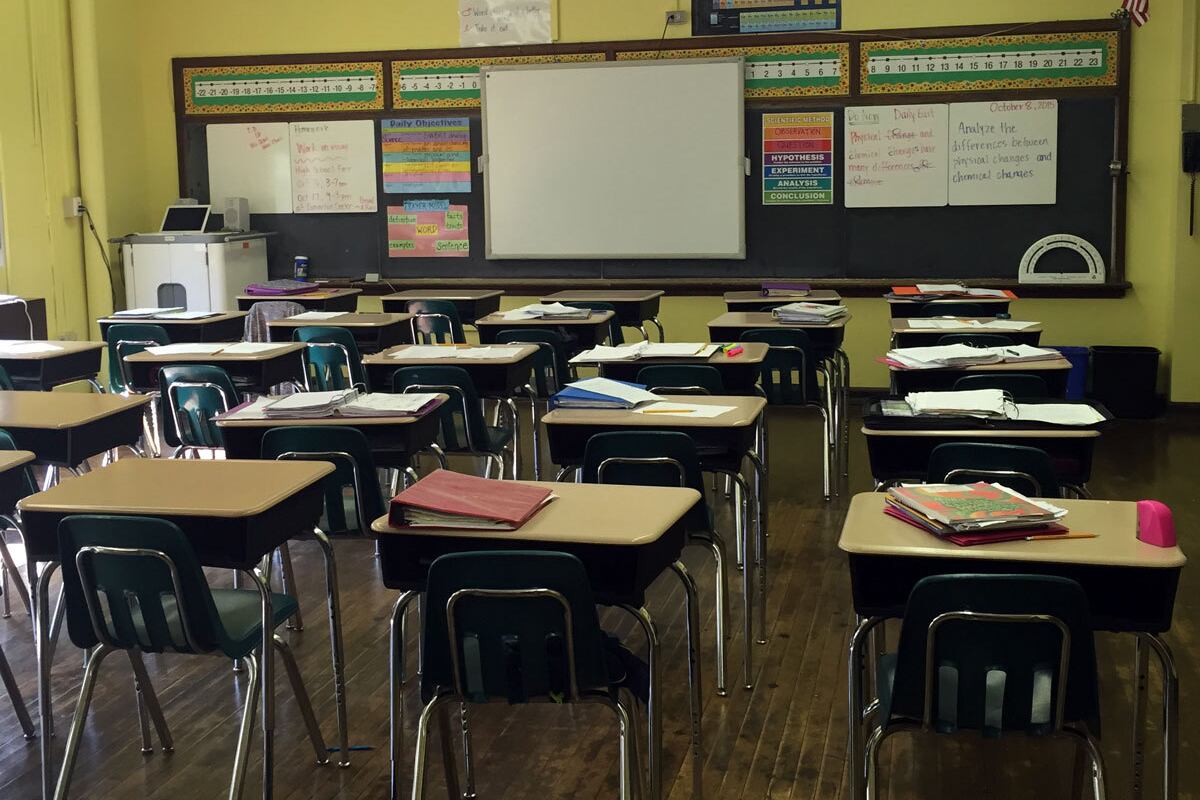Jeffco school leaders have said identifying middle schools to close will be more complicated than it was with elementary schools.
That’s a daunting challenge for a district that voted to close 16 elementary schools last fall.
Leaders plan to recommend to the school board in August which schools to close, and to redraw some attendance boundaries and redesignate feeder schools in summer 2024.
A look at enrollment, school spending, campus utilization levels, and family poverty gives a glance at some of the data that may inform Jeffco’s decisions.
The district’s work has been spurred by years of declining enrollment. Even though the number of residents in Jeffco increased over two decades, the population of school-age children decreased by 29,918 from 2000 to 2020. Fewer children are being born. According to the district, 2020 marked the lowest number of births recorded in 15 years.
The district has not yet identified the criteria to determine which middle and K-8 schools to close or consolidate. In one exception, district leaders have told the Arvada K-8 school community that if it earns a low state rating this fall, triggering possible state action, the district will recommend closure. The school is the only one that is nearing state action for low performance.
The district describes its work as data driven, and has published some school data that it may consider in deciding on closures.
With elementary schools last year, the district identified for closure or consolidation schools that had fewer than 220 students, or were occupying less than 45% of the capacity of their building, and had another elementary school within 3.5 miles that could absorb displaced students.
Compared with elementary schools, Jeffco’s 22 district-managed middle and K-8 school facilities tend to be in better condition, and have a narrower range of enrollment and utilization. Some regions, or articulation areas as the district calls them, have only one middle school fed by all the elementary schools, further complicating closures.
Here are some takeaways about middle schools in Jeffco:
Most middle schools are losing more students than they attract through school choice.
Of 22 neighborhood middle schools and K-8 schools in Jeffco, 18 are losing more students through the choice process than they attract, and only four schools gain students through that process. Colorado law and Jeffco’s system allow families to send their children to any school in the district or to transfer to schools in other districts that will accept them.
Of those 18, four schools lose more students than remain enrolled. Carmody Middle School, for example, had 892 students choose to attend different schools, according to district data, leaving only 626 students at the school.
A similar out-migration of students was one of the factors the district cited in emergency school closures including one two years ago.
About a third of these district schools are projected to have fewer than 500 students next year.
Nearly all of the Jeffco-managed middle schools and K-8 schools are projected to lose students. According to district figures, seven middle or K-8 neighborhood schools will have fewer than 500 students next school year, and three of those schools are already occupying less than 50% of the capacity of their school building.
Those three schools are: Coal Creek Canyon K-8, Moore Middle School, and North Arvada Middle School.
Coal Creek Canyon K-8 is projected to have 91 students next fall. The school currently serves 100 students.
Moore Middle School is already being considered for consolidation. The school’s principal partnered with the principal of Pomona High School in asking the district to approve a plan to consolidate the schools and turn Pomona into a sixth grade through 12th grade school instead. The school district is expecting estimates of the cost of required building upgrades, before taking a vote this summer.
At the other end of the range, one Jeffco middle school is over capacity. Three Creeks K-8 in Arvada enrolls 1,112 students. About 8% of the students there qualify for subsidized lunches, a measure of poverty, much lower than the district average. This school is the only one currently projected to have significant student enrollment growth next year.
Schools with lower utilization are more likely to have more students living in poverty.
Among the seven middle and K-8 schools in Jeffco that occupy less than 60% of their building’s total capacity, the schools average nearly 50% of students qualifying for free or reduced-price lunches, a measure of poverty.
The district’s overall average for all middle and K-8 schools is 36%.
The five schools that occupy more than 80% of their building average 25% of their students as qualifying for subsidized lunches.
Also, schools that have faster enrollment declines are more likely to have more students living in poverty. For example, among 10 schools with projected enrollment declines of more than 5%, an average of almost 42% of students qualify for subsidized meals, compared with about a 32% average at schools that have a small decline or that are projected to be growing.
The K-8 schools on average spend more than middle schools per student.
Since schools are funded based on the number of students enrolled, schools with fewer students end up with smaller budgets and aren’t able to provide as many resources or learning opportunities as schools with more students.
Among the middle schools and K-8 schools that the district is considering closing or consolidating, K-8 schools on average spend more than middle schools per student. One school, Coal Creek Canyon K-8, which is serving about 100 students, is spending $21,994 per student, more than 28% over the average per student cost at the district’s other K-8 schools.
Yesenia Robles is a reporter for Chalkbeat Colorado covering K-12 school districts and multilingual education. Contact Yesenia at yrobles@chalkbeat.org.







